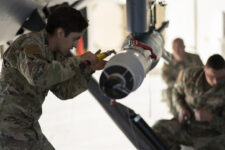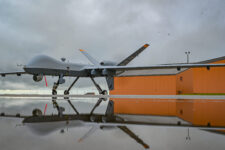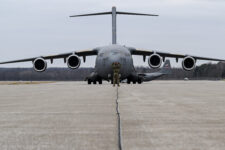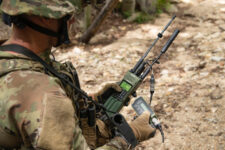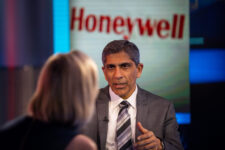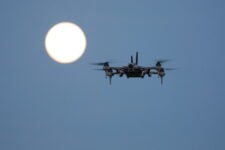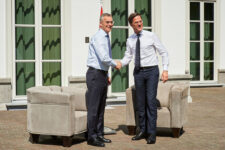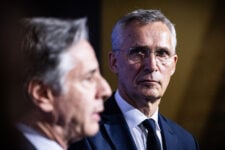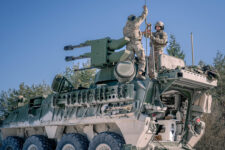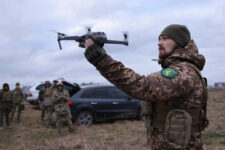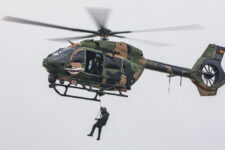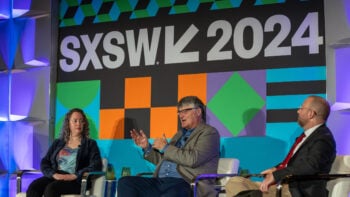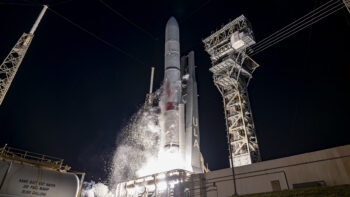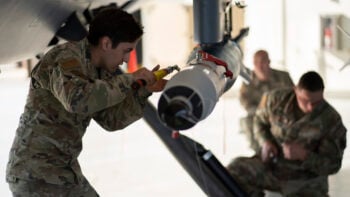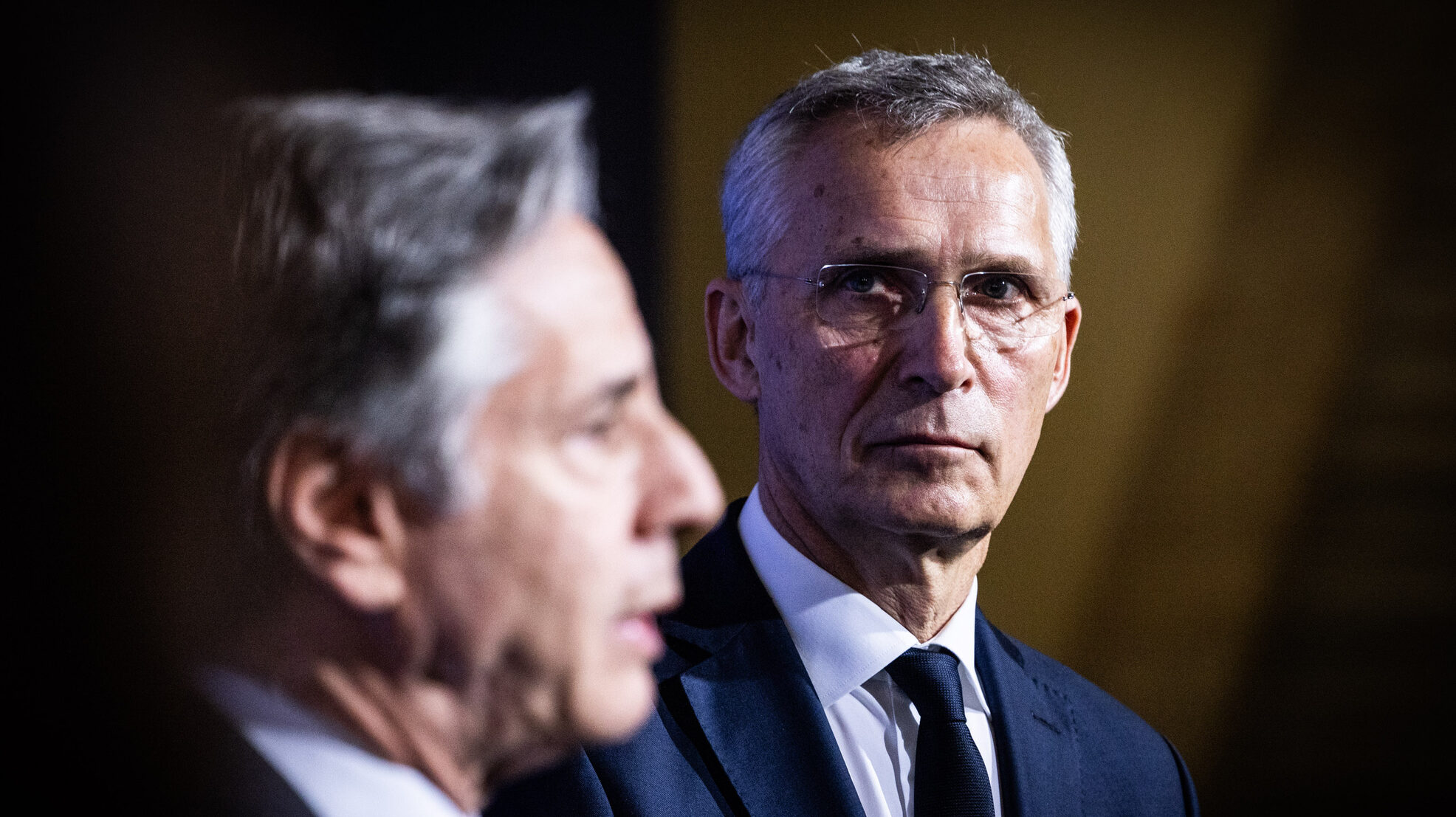
NATO Secretary General Jens Stoltenberg look on as US Secretary of State Antony J. Blinken speaks on May 31, 2024. (NATO)
The forthcoming NATO summit in Washington comes at a critical juncture for the alliance and in nation-state support to Ukraine. Getting the tone and substance right is vital for internal cohesion amongst member countries but also to send the right signals to Moscow and Beijing.
Last year’s summit held in Vilnius achieved marked progress on strengthening alliance defense and deterrence, but acrimony surrounding Kyiv’s to receive an invitation to join NATO — despite significant progress on other fronts — overshadowed the summit’s proceedings.
This year a successful NATO summit in Washington would demonstrate clear progress on four interrelated fronts — mission, money, membership and messaging — with consideration for Ukraine playing a key role in all four.
Mission: Boost Deterrence
The war against Ukraine and the reinvigorated threat perception of Russia has imbued NATO with a new sense of purpose and focus. In the case of the war in Ukraine, there is unanimous consensus that Kyiv must win, even if there’s still little international consensus on what “winning” means now, in the third year of war. In the case of Russia’s threat perception, Moscow’s aggression against Ukraine confirmed the worst fears of the eastern members of NATO and reignited, especially amongst Western members, long-dormant awareness of the importance of defense and security in the modern era.
The Washington summit represents an opportunity to double-down on and strengthen existing trendlines in NATO defense and deterrence. The regional defense plans agreed to at Vilnius form a foundation on which to build, and here progress is vital.
For example, increased standardization across munitions and attendant increases in interoperability are necessary to increase overall readiness. Reaching concrete agreements on these matters would send a clear signal to Russia about the seriousness of the alliance to see Ukraine through to victory and defend against any future predation.
Accompanying standardization efforts, NATO member-states must reinvigorate Europe’s defense industrial base. This means practical action in the form of contracts and other market signals, not simply empty verbal commitments and political statements of intent.
Three years into the war and the defense industrial bases of the United States and Europe are far from performing at the levels necessary for sustained, high-intensity convention war. The reason? Almost exclusively an unwillingness by the private sector to lean forward on necessary investments without clear, actual long-term contracts from governments in Washington and across Europe.
Money: More, More Consistently
For NATO, continued forward momentum on meeting the 2 percent of GDP spending is vital to signal to Russia the alliance’s commitment to long-term defense and deterrence, but also to offset concerns amongst Republicans in Washington (and President Donald Trump) that Europe isn’t spending its fair share. Whether the United Kingdom’s Prime Minister Rishi Sunak’s 2.5 percent commitment becomes a new spending floor, as some have privately suggested it should, is likely a bridge too far for the Washington summit.
For Ukraine, individual spending packages, like the long-delayed US supplemental are insufficient both to the task at hand and as a symbol of Western commitment. Yes, the resources are important, but the inconsistency of funding — at least from Washington — severely complicates Kyiv’s mid-term and long-term planning.
If Kyiv is unsure of whether resources are forthcoming, how can leaders there prepare for future operations? In practice, they cannot. Ukraine needs long-term, multi-year spending packages from NATO member-states to allow Kyiv to plan effectively and to signal to Russia the alliance’s resolve. And while the outcome of November’s elections in the United States is unclear, Europe must be prepared to step in and step up with such commitments.
Membership: A Path, Well-Considered
The question of the exact path and timing for Ukraine’s accession to NATO will likely remain unresolved and, therefore, expectations on both the part of Kyiv and the broader international community must be shrewdly managed ahead of and during the summit.
Though NATO chief Jens Stoltenberg has said Kyiv is on an “irreversible path” towards membership, leaders should use the summit to better explain what that means and, crucially, answer practical questions that remain unresolved. For instance, should Ukraine be allowed to join before the war is over, how does NATO’s Article V come into play?
Additionally, while calls for the introduction of military forces from NATO nations into Ukraine have grown (particularly from France’s president, Emanuel Macron), that member-states are thus far reluctant to do so reflects fears of “what comes next?” in the event of NATO casualties or Russian escalation.
NATO cannot have it both ways. It cannot be reluctant to introduce NATO forces into Ukraine and unwilling to assume the attendant risk, and at the same time push for Ukraine’s membership in the defensive alliance, which carries with it Article Five obligations for mutual defense.
In Washington, members should demonstrate forward momentum in the process towards eventual accession but stop short of making any definitive commitments or deadlines for doing so. In lieu of that formal invitation, the multiplicity of bilateral defense commitments between member-states and Ukraine will provide both confidence-building measures, but also practical military support, both of which are necessary for Kyiv’s defense.
Messaging: We’ve Got Each Other’s Backs
Each of the previous three items carries with it import for the final one: messaging.
From support to money to alignment on Ukraine’s NATO hopes, the messaging that comes out of the NATO summit must be clear: The alliance is unified. The alliance is resilient. The alliance is focused on the long-term threat that Russia poses to continental security. The alliance will continue to support Ukraine in its defense against Moscow’s predation.
In Washington, there can be none of the public and not-so-public disagreements that previously followed Ukraine’s unmet expectations of a clear path towards membership.
It is also vital that the alliance does not build up unrealistic expectations about Ukraine’s offensive prospects. Much of the frustration that resulted from Ukraine’s “failed” counteroffensive was due to mismanaged expectations that flowed from Washington and European capitals, and the absence of clear, viable objectives.
The audience matters as much as the message and here there are two distinct audiences: the NATO member-states themselves and their populations, and the adversary/competitor nations of Russia and China. While in Europe — and to a lesser degree in the United States — the support for Ukraine remains high (if uneven e.g. Hungary), the protracted nature of the war will, inevitably, lead towards doubts and fatigue. Recognizing this reality is vital; one cannot wish it away. Convening a successful summit, communicating a message of unity and firm commitment, and consistently answering “why” Ukraine matters will help offset domestic calls for an early resolution to the war.
Internationally, Russia and China will watch for any daylight between NATO member-states and seize upon any vacillation or doubt about the path forward. For Russia, if NATO is not seen to act on basics like standardization, interoperability, or forward deployment, it will confirm what President Vladimir Putin already believes—he can merely wait NATO out in Ukraine. China, for its part, will watch closely, too. How resolute is the alliance and what messages will it send about the Indo-Pacific.
While unanimity about NATO’s role, if any, in the region are unlikely to be answered in Washington, the signals the summit sends will be vital for friends and foes alike.
Joshua C. Huminski is Director of the Mike Rogers Center for Intelligence & Global Affairs at the Center for the Study of the Presidency & Congress, a George Mason University National Security Institute Senior Fellow, and Non-Resident Fellow with the Irregular Warfare Initiative. He can be found on Twitter @joshuachuminski.
